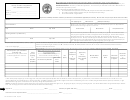State of Illinois
Department of Human Services - Bureau of Child Care and Development
CHILD CARE APPLICATION
Parent/Guardian Name:
11) What if my work schedule varies?
You may submit additional paycheck stubs and attach additional information to establish an average work schedule.
12) What if my child's other parent or stepparent lives in my home?
If the child's other parent or stepparent lives in your home, he or she also needs to be working or in school, training, or a TANF-required activity in
order for you to receive a child care subsidy. The other parent or stepparent also needs to complete pages 4 - 6 of the application and submit the
same kinds of documents as you do, which are listed in the application instructions. If the other parent or stepparent is not working or in school,
training, or a TANF-required activity, you will need to write and sign a statement about why he or she cannot care for the child.
13) When will I find out if I'm approved for child care assistance?
You and your provider will be notified of approval or denial within 30 days after we receive your completed application and all of the required
documentation. Incomplete applications are the #1 reason for delay.
14) When should I send my child to their child care provider and when should the child care provider start care?
Children should not attend child care prior to the approval notice unless the parent and the provider have a payment agreement plan in place until
the approval/denial notice is received by both the parent and the provider.
CHOOSING A CHILD CARE PROVIDER
15) Does my child care provider have to be licensed?
No. Certain home child care providers are not required to have a license. A provider without a license must be at least 18 years old and may not
care for more than 3 children, including their own children, unless all of the other children are from the same household.
16) Will the State pay relatives to take care of my child?
Yes. Relatives can be paid to provide child care even if they live in the home with the child. Parents and step-parents cannot be paid as child care
providers. TANF clients can be paid child care providers; however, earnings must be reported to their IDHS caseworkers. Exception: the State will
not pay any relatives included in the child's TANF grant to care for the child.
17) Does the State do any kind of background check on child care providers?
In Illinois, all child care providers must undergo a backgound check. The background check consists of three parts: a CANTS check (Child Abuse
& Neglect Tracking System), a SOR check (Sex Offender Registry), and a criminal history record check wich is done through fingerprinting. Your
provider will be required to have some or all of these checks. If care is done in your provider's home, anyone who lives in the home who is age 13
or older will also be required to be checked. There is no charge to the parent or the provider for the background check. Your CCR&R will tell your
provider and their household members which checks they are required to complete.
PAYMENTS
18) Can my child care provider charge me more than my co-payment amount?
Yes, If your provider charges private paying parents a higher rate than the IDHS program pays, your provider can ask you to pay the difference by
requiring a fee in addition to your co-payment. Be sure that you and your provider discuss what you are expected to pay before care for your child
starts. If your provider's costs are too high for you, your CCR&R may be able to help you find a child care provider who is more affordable. Call
them for help finding a new child care provider.
19) How much will the child care provider be paid by the State?
The most the State will pay depends on the age of the child, the region of the state, the type of child care provider, and whether the child is in full
-time or part-time care. A copy of the rates can be obtained by calling the CCR&R. All providers are considered self-employed (NOT employees of
IDHS or the CCR&R). Taxes cannot be taken out of payments. Providers are required by law to report all Child Care payments to the IRS as earned
income. If your provider is not a corporation or governmental unit (public school or park district), and earns over $600 within a calendar year, your
provider will receive a copy of the 1099 Miscellaneous Form from the Office of the Comptroller reporting his/her income to the IRS. Your provider
should receive the form by February 15th.
20) When will my child care provider get paid?
It can take 4 to 8 weeks for your provider to receive the first payment. After your provider receives the first payment, regular payments will arrive on
a monthly basis. The reason the first payment takes longer is your provider's name and social security number must be recorded with the Office of
the Comptroller before any payments can be made. To do this, the CCR&R will mail your provider a W9 tax form. The sooner he or she neatly
completes and returns the W9 form to the CCR&R, the sooner he or she gets paid.
After the Office of the Comptroller has your provider's information on file, we can send him or her the first "billing certificate." This is the form that
you and your provider complete each month to tell IDHS how much to pay your provider.
IL444-3455 (R-6-11)
Page 16 of 17
 1
1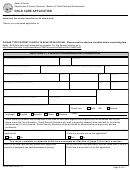 2
2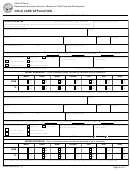 3
3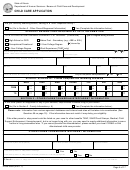 4
4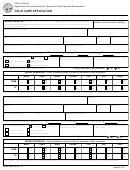 5
5 6
6 7
7 8
8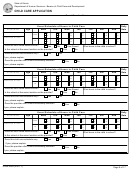 9
9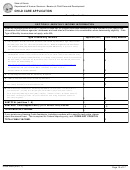 10
10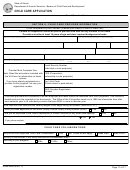 11
11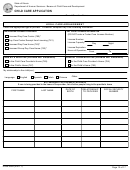 12
12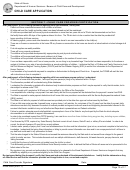 13
13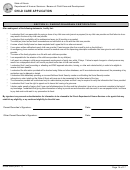 14
14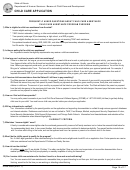 15
15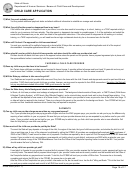 16
16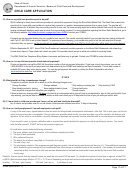 17
17
